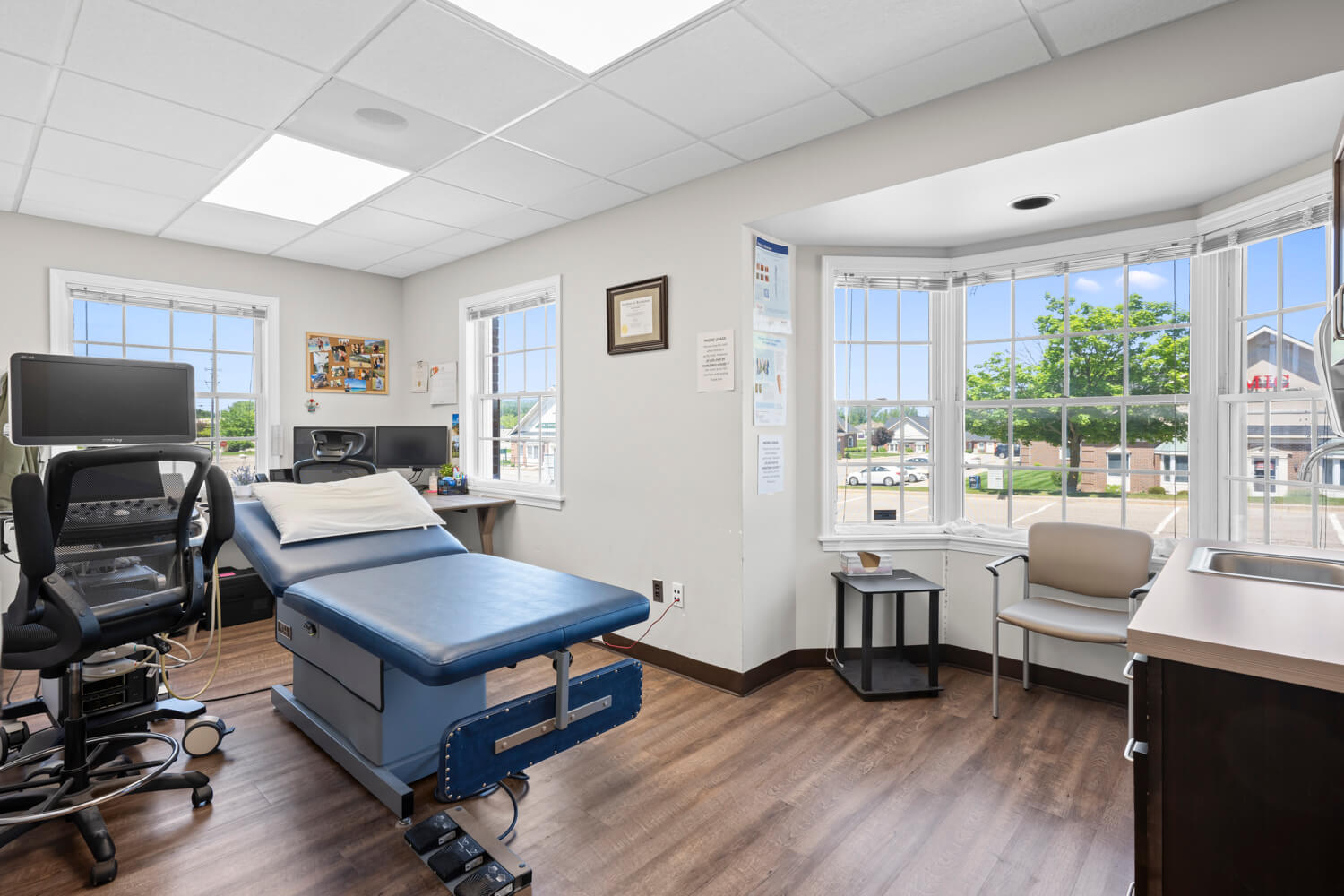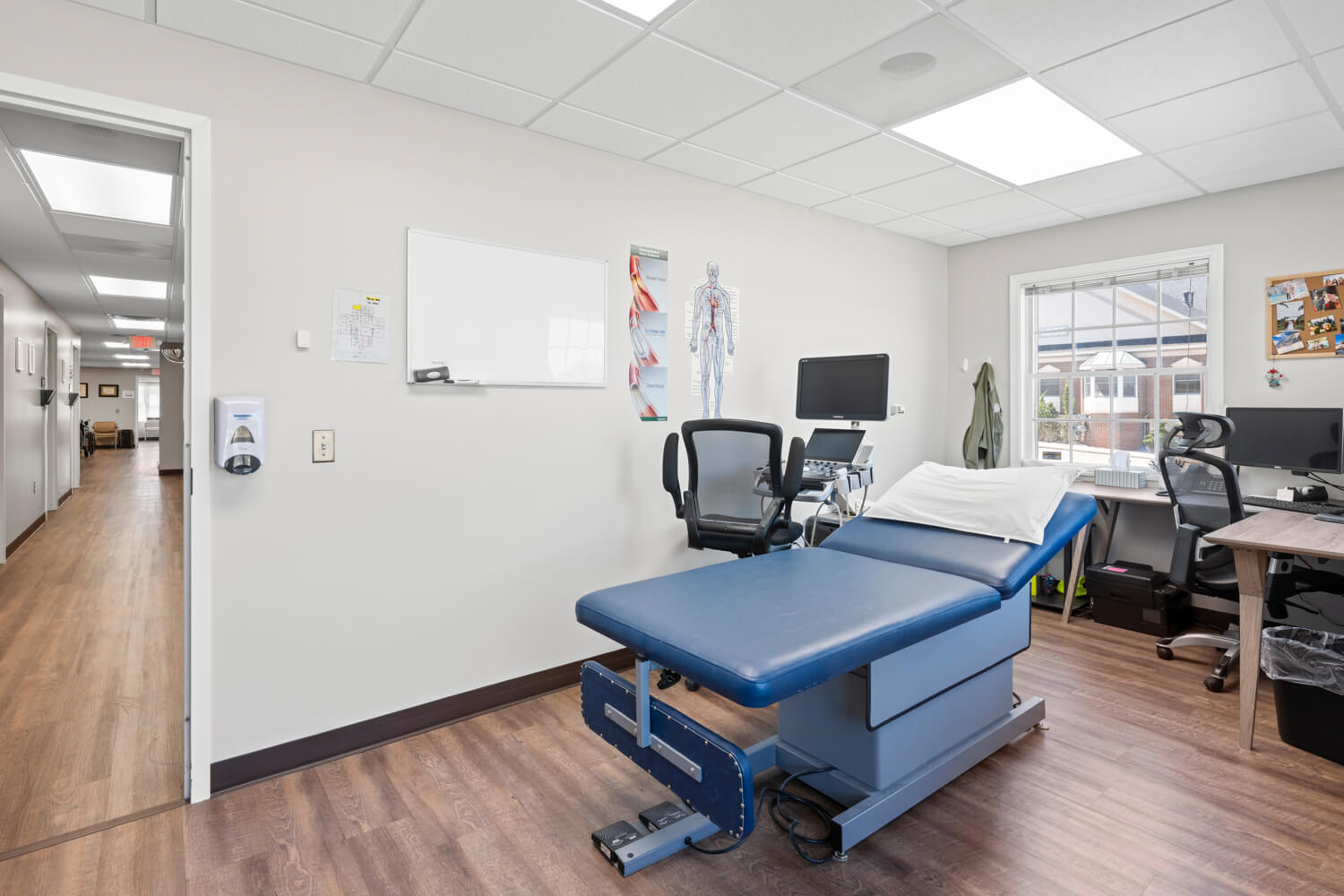Vascular Lab
Certifications
Before a Vascular Surgeon can take their board certification in Vascular Surgery, The American Board of Surgery is now requiring the Physician to obtain a new credential called RPVI (Registered Physician in Vascular Interpretation). The American Board believes, as do we, that only a qualified physician should be interpreting a non-invasive vascular study. At VIM all of our physicians carry the RPVI credentials.
Vascular Institute of Michigan takes quality control and quality measures very seriously. One avenue of maintaining our high quality of standards is to seek accreditation. We are actively moving through the process to obtain accreditation by the Intersocietal Accreditation Commission (IAC).
Definitions
Ultrasound is a noninvasive medical test that helps physicians diagnose and treat medical conditions. Ultrasound imaging, also called ultrasound scanning or sonography, involves the use of a small transducer (probe) and ultrasound gel to expose the body to high-frequency sound waves and no exposure to ionizing radiation. Ultrasound is safe and painless, and produces pictures of the inside of the body using sound waves. Because ultrasound images are captured in real-time, they can show the structure and movement of the body’s internal organs, as well as blood flowing through blood vessels.
Vascular Ultrasound is a special ultrasound technique that evaluates blood flow through a blood vessel, including the body’s major arteries and veins in the abdomen, arms, legs and neck.
A Vascular Technologist is a specialized sonographer who goes through an accredited training program to assist the physician in interpreting Vascular Studies. Vascular Technologists differ from General Ultrasound Technologists that are used by most non-specialized, stand-alone, testing facilities in that they are highly trained in accurately evaluating the complete arterial and venous systems.
Tests
An Abdominal Aorta Duplex uses ultrasound to evaluate the blood flow through the aorta. The aorta is the large artery that takes blood from the heart to the entire body. This non-invasive test does not use needles, drugs or dyes.
Abdominal Aortic Screening
An abdominal aortic duplex, also known as an abdominal aortic ultrasound, is a non-invasive exam that uses high-frequency sound waves to evaluate the aorta, the main artery in the abdomen that supplies blood to the legs and organs. The exam combines traditional ultrasound and Doppler ultrasound to create images and assess blood flow:
A doctor may recommend an abdominal aortic duplex to look for abnormalities such as:
During the exam, you will lie on your back on a movable table while a warm gel is placed over the area to be tested. An ultrasound probe will then be used to image different parts of the abdomen and pelvis.
To prepare for the exam, you should:
After the exam, the physician will analyze the images and send a written report to the referring doctor within 48 hours
Arterial Doppler (Segmental Doppler)
A segmental Doppler, also known as a leg arterial Doppler ultrasound exam, is a painless, non-invasive procedure that uses Doppler ultrasound to evaluate blood flow in the arteries of the legs. The exam can help doctors determine if there is arterial narrowing, where it is located, and if it is causing leg pain during exercise. It can also help identify the presence and severity of arterial occlusive disease, and monitor the progression of peripheral vascular disease.
During the exam, a patient lies on a stretcher while a technician places small probes over various parts of the legs and arms to record arterial flow. The technician may also examine circulation to the feet and toes. The patient may feel slight pressure when the probes are placed, or tightness when blood pressure cuffs are inflated.
Arterial Bypass Graft
An ultrasound scan of your bypass graft may also be called a duplex or doppler. This test uses ultrasound to produce images of the bypass graft in your legs, arms or abdomen.
It is a safe and effective way to assess the blood flow, and can determine whether the graft is working properly. If we find any problems with the graft, it allows the consultant to plan the best treatment.
The test is painless and does not use any radiation or needles. There are no risks associated with it.
ABI/PVR
The ABI is a measurement of the blood pressure in the lower leg compared to the blood pressure in the arm. Your physician will compare the two numbers to determine your ABI. Normally, the blood pressures in your ankle and arm should be about equal. But if your ankle pressure is lower than your arm pressure, it could be a sign that your leg arteries are narrowed.
The PVR is a test which uses blood pressure cuffs and a hand held ultrasound device (Doppler) to obtain information about the arterial blood flow in the arms and lefts.
The blood pressure cuffs are placed on the arm and leg and inflated, while the Doppler is used to listen to the blood flow in the leg and arm.
Why do I need an ABI/PVR?
Your physician has recommended that you have this test to evaluate the blood flow in your arms and legs. This test is used to evaluate the presence of peripheral arterial disease or PAD.
What should I expect during the PVR test?
There is no preparation for the test. You will be asked to wear shorts and a short sleeve shirt for the test and you will be required to remove your shoes and socks. Blood pressure cuffs will be applied to your arms and legs and at various times will be inflated. Some patients may experience discomfort at the time of inflation. The technician will explain each step to you during the test and will stop the test if you experience increased pain. You will be able to resume your normal activities after the test is complete. The test takes approximately 45 minutes.
Arterial Duplex
An arterial duplex ultrasound is a non-invasive imaging test that vascular physicians prescribe to see how blood is moving through arteries. It combines the imaging capability of ultrasound with the recording capability of a Doppler ultrasound.
How do you prepare for arterial duplex?
Some preparation is needed. The study examines arteries deep in the abdomen. Gas in the intestinal tract can interfere with ultrasound evaluation. It is therefore best to have the examination performed after an overnight fast, and it is important to avoid tobacco and caffeine prior to the test.
Cerebrovascular Duplex (Carotid Artery) Screening
A carotid artery duplex scan, also known as a carotid ultrasound, is a noninvasive imaging test that uses sound waves to examine blood flow through the carotid arteries in the neck. The scan can also assess blockages or narrowing in the carotid arteries or their branches, and may also include the vertebrobasilar artery.
During the scan, a healthcare provider uses a device called a transducer to create pictures of the arteries. The Doppler ultrasound technique also allows the provider to see how well blood is flowing through the arteries.
A doctor may order a carotid artery duplex scan if they think a patient might be at risk for stroke. If the results are abnormal, the doctor can develop a treatment plan to reduce the risk.
To prepare for the scan, patients should:
Dialysis Access Screening
A dialysis vascular access scan, also known as a vascular ultrasound, is a noninvasive procedure that helps physicians assess the veins and arteries used for dialysis:
Mapping veins:
The scan can help determine if veins are large enough for an arteriovenous (AV) fistula, or if an AV graft is needed.
Blood flow:
A Doppler ultrasound can show how much and how quickly blood flows through the vessels, which can help the surgeon select the best ones to use.
Maturation:
The scan can help determine if a fistula or graft has reached maturation, or if a new one is maturing properly.
Complications:
The scan can help identify complications such as stenosis, thrombosis, aneurysm, or pseudoaneurysm formation
During the scan, a vascular sonographer applies ultrasound gel to the patient’s skin and uses a small camera probe to visualize the vessels. The scan usually takes 30 to 60 minutes and you may hear some “swooshing” noises from the machine, which are normal.
Renal and Mesenteric Artery Imaging
A renal/mesenteric arterial duplex ultrasound, also known as a renal artery duplex scan, is a non-invasive diagnostic ultrasound that uses sound waves to evaluate blood flow in the renal arteries and mesenteric arteries:
Renal arteries:
Supply blood to the kidneys. A renal artery ultrasound can help detect blockages, aneurysms, or narrowing in the arteries, which can lead to kidney failure or high blood pressure. It can also image the kidneys and provide information about secondary damage.
Mesenteric arteries:
Supply blood to the liver, spleen, stomach, and intestine. A mesenteric duplex scan can help detect blockages in blood flow that may cause pain or other problems.
A doctor may recommend this exam if they suspect a problem with the renal or mesenteric arteries, such as in preparation for surgery or to follow up after open surgery or endovascular intervention. The test usually takes 30–60 minutes and is performed in a vascular lab. To prepare, you should:
During the exam, you’ll lie on your back or stomach on a table and remain still while a technician spreads gel over the area being examined.
Venous Duplex
A venous duplex ultrasound, also known as a venous doppler ultrasound, is an imaging technique that uses high-frequency sound waves to create pictures of blood flowing through veins. The test combines two types of ultrasounds, two-dimensional echo and Doppler, to show the speed and direction of blood flow and where it may be blocked.
During the exam, a patient lies on a table while an ultrasound technician applies gel to the area being examined and moves a small hand-held device called a transducer over the skin. The transducer emits sound waves that echo off moving objects, like red blood cells, and are converted into images on a computer screen. The patient may also be asked to perform breathing exercises, and the examiner may apply pressure to certain veins. The exam usually takes 15 to 30 minutes and should be painless, though the patient may feel some pressure from the transducer.
A venous duplex ultrasound is commonly used to search for blood clots and to examine varicose veins. Based on the findings of the test, a doctor will determine if further testing or treatment is necessary.
Venous Reflux
A venous reflux ultrasound, also known as a venous reflux study, is a noninvasive ultrasound exam that uses sound waves to image the veins in the legs to identify unhealthy valves. The test is performed by a sonographer in a vascular lab and usually takes 1–2 hours, depending on whether one or both legs are examined.
During the exam, the patient lies on a tilted table while the sonographer applies gel to the legs and moves a handheld transducer back and forth over the skin. The patient may be asked to move into certain positions and lie still while the sonographer applies compressions at different levels. The ultrasound machine sends signals back to the machine based on how the sound waves travel through the legs, which are then displayed on a video monitor as an image of the blood vessels.
To prepare for the exam, patients should:
A venous reflux ultrasound can help evaluate conditions such as venous insufficiency, which occurs when veins have difficulty returning blood from the legs to the heart, and deep vein thrombosis (DVT), which can cause blood clots in the veins. Left untreated, venous reflux can lead to more serious complications, including ulcers, bleeding, and DVT.










